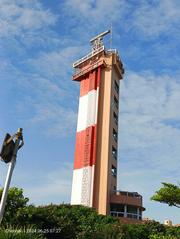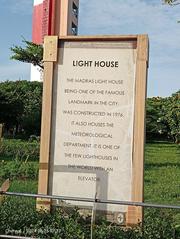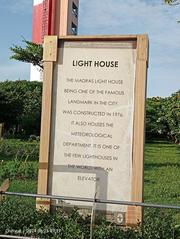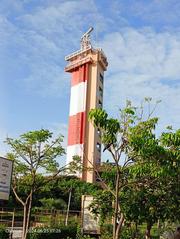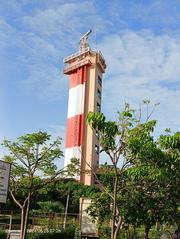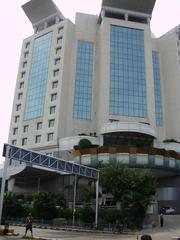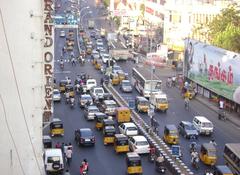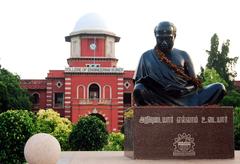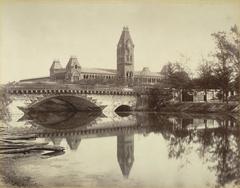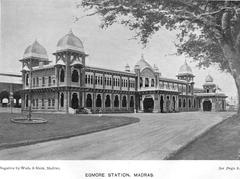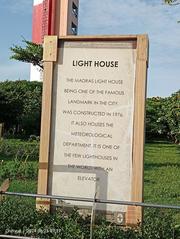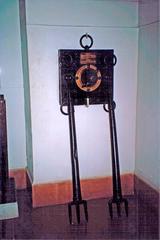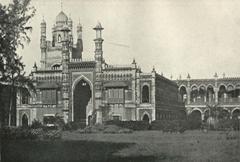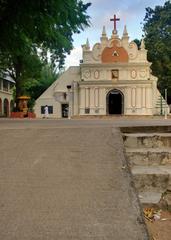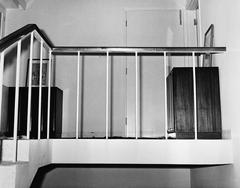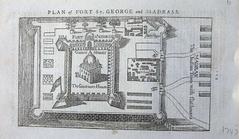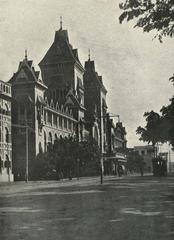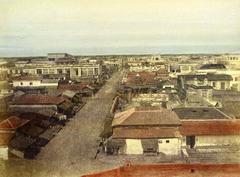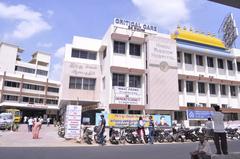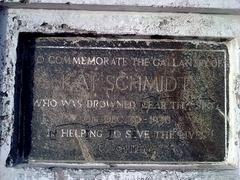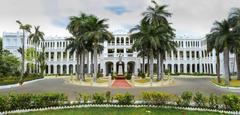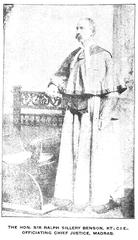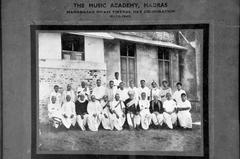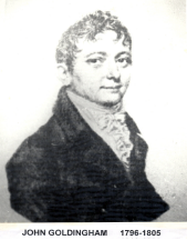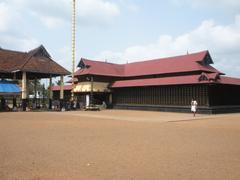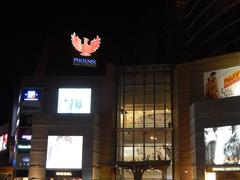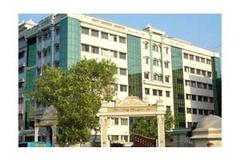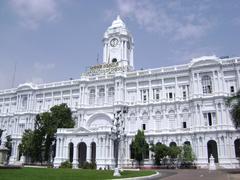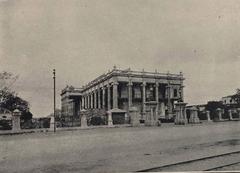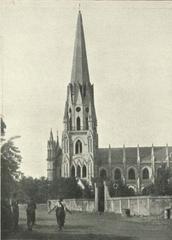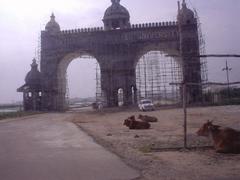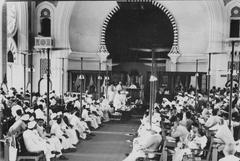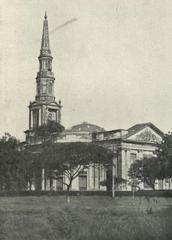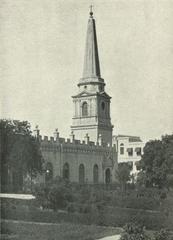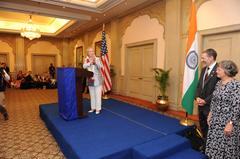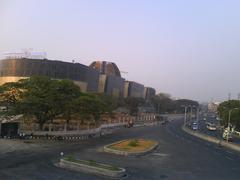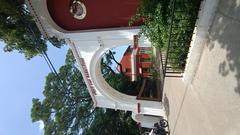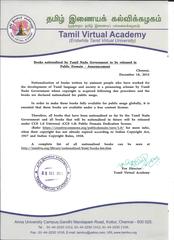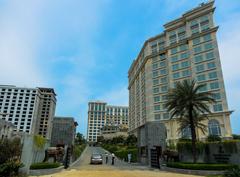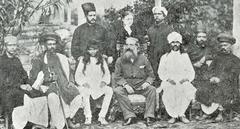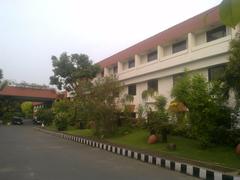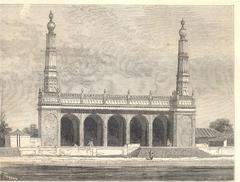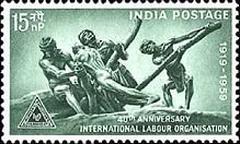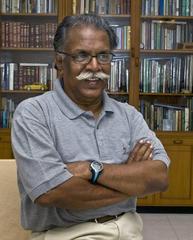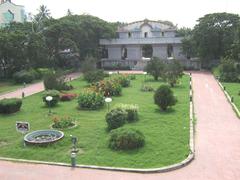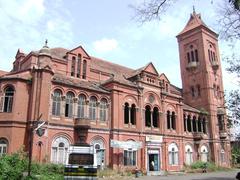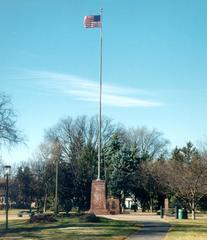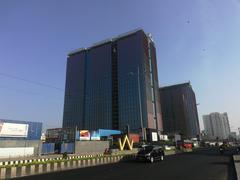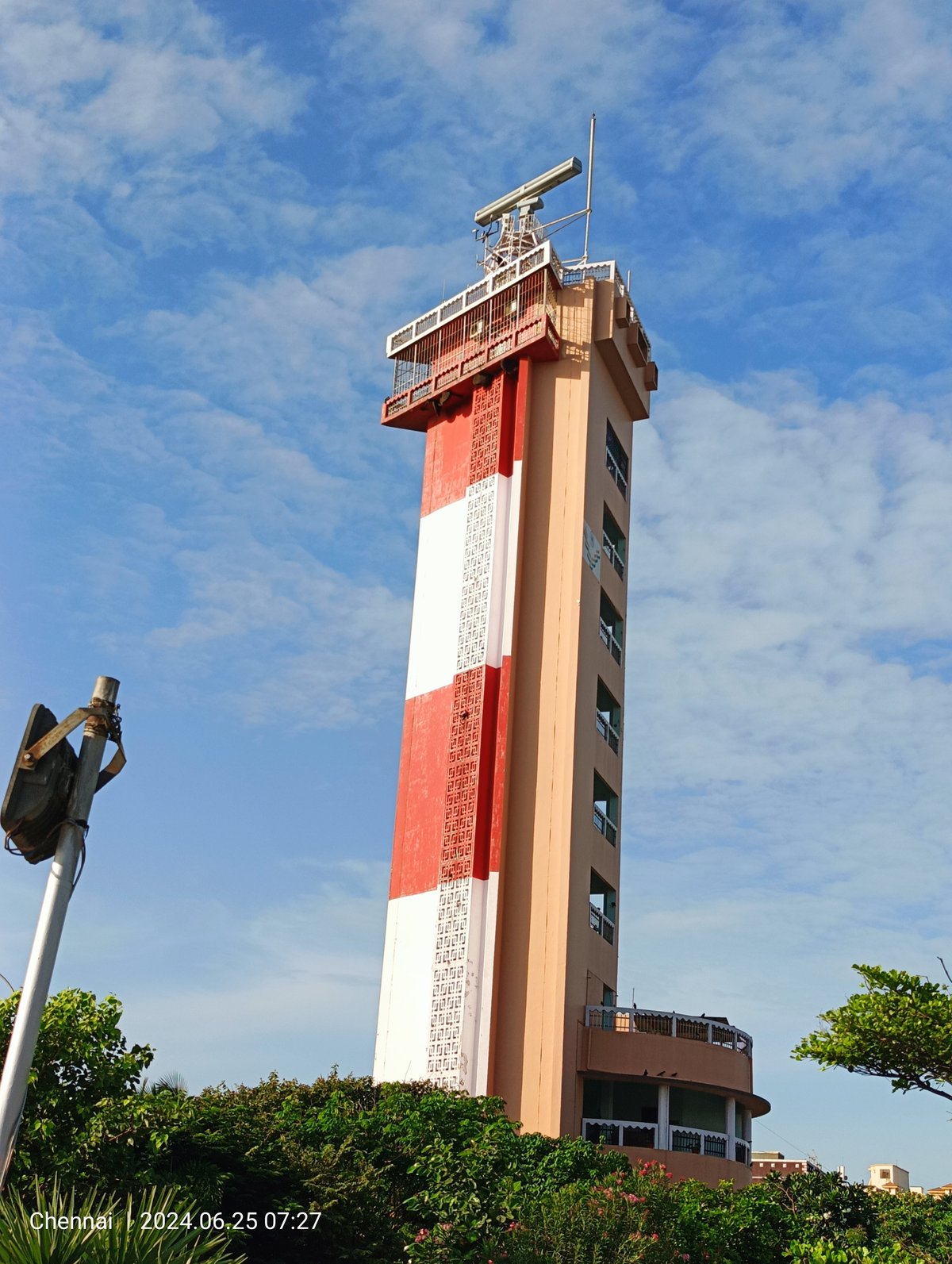
Chennai Lighthouses Visiting Hours, Tickets, and Historical Sites Guide
Date: 14/06/2025
Introduction: Illuminating Chennai’s Coastal Heritage
Chennai, a vibrant metropolis on India’s southeastern coast, is home to some of the country’s most architecturally and historically significant lighthouses. These enduring beacons have guided vessels safely along the Coromandel Coast for over two centuries and stand as proud symbols of the city’s maritime legacy and evolving urban landscape. From the earliest light atop Fort St. George to the modern Marina Beach Lighthouse, each structure reflects a unique era in Chennai’s growth—from colonial trade hub to bustling urban center. This comprehensive guide explores the fascinating history, architectural evolution, cultural significance, and practical details of Chennai’s lighthouses, including visiting hours, ticketing, accessibility, and nearby attractions. Whether you’re a history aficionado, architecture enthusiast, or a casual traveler, this article equips you with all you need to explore Chennai’s iconic maritime sites (The Hindu, Chennai Tourism, PIB Press Release).
Table of Contents
- Early Beginnings: First Lighthouse at Fort St. George (1796–1844)
- Second Lighthouse: Granite Doric Column (1844–1894)
- Third Lighthouse: Madras High Court Dome (1894–1977)
- Marina Beach Lighthouse: Modern Era (1977–Present)
- Cultural & Social Significance
- Architectural Evolution and Visitor Experience
- Visiting Hours and Tickets
- Accessibility and Travel Tips
- Nearby Attractions
- FAQs
- Community Impact, Conservation, and Future Developments
- Summary & Practical Visitor Tips
- References & Further Reading
Early Beginnings: First Lighthouse at Fort St. George (1796–1844)
Chennai’s lighthouse story began in 1796, when a lantern was mounted on the Officer’s Mess-cum-Exchange Building, now the Fort Museum at Fort St. George. This makeshift lighthouse—using oil lamps with large wicks—served the growing navigational needs of the East India Company and guided ships to a shoreline much closer to the fort than today. The beacon remained in service until 1844, when city expansion and advances in navigational technology necessitated a purpose-built solution (The Hindu).
Second Lighthouse: Granite Doric Column (1844–1894)
Recognizing the need for a more effective beacon, a granite Doric column lighthouse was constructed north of Fort St. George, within what is today the Madras High Court campus. Completed in 1843 and operational from 1844, it cost ₹75,000—a substantial sum for the period. The imposing column, visible by day and night, became a key landmark for mariners. However, the construction of the towering High Court building in 1892 soon obscured its visibility, prompting another shift in Chennai’s lighthouse story (The Hindu).
Third Lighthouse: Madras High Court Dome (1894–1977)
In 1894, the lighthouse lantern was moved to the dome of the newly built Indo-Saracenic Madras High Court. The High Court’s design intentionally integrated the lighthouse, merging architectural elegance with functional necessity. This lighthouse was crucial during both World Wars, aiding British and Allied vessels. It remained operational for over 80 years, until technological progress and urban changes led to the need for a modern facility by the 1970s (The Hindu).
Marina Beach Lighthouse: Modern Era (1977–Present)
The present-day Marina Beach Lighthouse, inaugurated in 1977, stands 45.72 meters tall on Marina Beach Road. Its distinctive red-and-white, triangular cylindrical concrete tower is unique in India and features one of the nation’s only lighthouse elevators—making the observation gallery on the ninth floor accessible to all (Things.in, The Dilli). The gallery offers 360-degree vistas of the Bay of Bengal, Marina Beach, and the Chennai skyline. The lighthouse is solar-powered and includes a three-story harbor-control building, blending function and modern design (Rehlat).
Cultural & Social Significance
The Marina Beach Lighthouse is more than a navigational aid; it is a Chennai icon. Featured in popular Tamil films like “May Maadham” and “Ghilli,” and regularly depicted in local art and literature, it symbolizes resilience, hope, and the city’s enduring connection to the sea (The Hindu). The on-site maritime museum offers engaging exhibits on lighthouse history, technology, and Chennai’s maritime trade, appealing to families, students, and history lovers (TravelTriangle).
Architectural Evolution and Visitor Experience
The lighthouse’s rare triangular cross-section enhances stability against coastal winds and cyclones. Bold red and white stripes make it instantly recognizable. Elevator access distinguishes it as one of the few Indian lighthouses accessible to visitors with mobility challenges (Things.in). The modern beacon emits a white flash every 10 seconds, visible for 28 nautical miles, ensuring continued maritime safety.
Upgrades in recent years include green landscaping, children’s play areas, and improved amenities, making it a family-friendly destination (The Hindu).
Visiting Hours and Tickets
- Open: Tuesday–Sunday, 10:00 AM–1:00 PM & 3:00 PM–6:00 PM
- Closed: Mondays for maintenance and on national holidays
- Tickets:
- Adults (Indian citizens): ₹10–₹20
- Children (under 12): ₹5 or free (depending on policy)
- Foreign nationals: ₹25
- Camera/Video: Additional fee for still/video cameras (Chennai Tourism, Travelling Camera)
Tickets are available at the entrance; carrying small-denomination cash is recommended as digital payments may not always be accepted.
Accessibility and Travel Tips
- Location: Kamarajar Salai (Beach Road), adjacent to Marina Beach (Wikipedia, Chennai Tourism)
- Transport: Close to Light House MRTS station, with frequent public and private buses. Chennai Central Railway Station is about 6 km away.
- Parking: Limited parking is available nearby.
- Elevator: Ensures accessibility for seniors and visitors with mobility challenges.
- Facilities: Restrooms, drinking water, and security are provided.
- Best Time to Visit: November–February (cooler weather); early mornings and late afternoons for optimal views and photos (Indian Visit).
Nearby Attractions
Combine your lighthouse visit with these Chennai landmarks:
- Marina Beach: One of the world’s longest urban beaches
- Fort St. George & Fort Museum: Colonial history and artifacts
- Madras High Court: Architectural marvel
- Kapaleeshwarar Temple (Mylapore): Dravidian temple architecture
- San Thome Basilica: Historic Christian pilgrimage site
- Government Museum and Art Gallery: Cultural treasures
Explore local street food, crafts markets, and cultural events along the beach (Indian Eagle).
FAQs
Q: What are the Marina Beach Lighthouse visiting hours?
A: Tuesday–Sunday, 10:00 AM–1:00 PM and 3:00 PM–6:00 PM. Closed Mondays and national holidays.
Q: How much are tickets?
A: ₹10–₹20 for Indian adults, ₹5 for children (often free for those under a certain age), ₹25 for foreigners. Additional fee for cameras.
Q: Is the lighthouse accessible for disabled visitors?
A: Yes, thanks to the elevator.
Q: Is photography allowed?
A: Yes, with a nominal camera fee.
Q: Are there guided tours?
A: No regular tours, but informative displays and a small museum are on-site.
Q: Are restrooms available?
A: Yes, basic facilities are provided.
Q: Best time for photography?
A: Early morning and sunset for dramatic lighting.
Community Impact, Conservation, and Future Developments
Chennai’s lighthouses, especially Marina and Mahabalipuram, are at the heart of the city’s cultural and economic revitalization. Under the Maritime India Vision (MIV) 2030 and Amrit Kaal Vision 2047, lighthouse precincts are being upgraded with modern amenities, digital ticketing, virtual reality exhibits, and sustainable features like solar lighting and rainwater harvesting (PIB Press Release, India Infra Hub). Heritage museums, community skill training, and public-private partnerships are fostering local employment, artisan markets, and conservation efforts. Chennai Metropolitan Development Authority’s third master plan further integrates lighthouse sites into urban growth and disaster resilience strategies (New Indian Express).
Summary & Practical Visitor Tips
Chennai’s lighthouses are living monuments to the city’s rich maritime history and ongoing transformation. The journey from the humble beacon at Fort St. George to the modern, accessible Marina Beach Lighthouse reflects Chennai’s progress and community spirit. These sites are not only navigational aids but also serve as educational centers, tourist attractions, and catalysts for local development. With affordable tickets, visitor-friendly hours, and inclusive facilities, the Chennai Lighthouse welcomes thousands annually for breathtaking views, immersive history, and unique cultural experiences. To make the most of your visit:
- Check official timings before arrival.
- Plan for early morning or sunset visits.
- Carry cash for tickets and camera fees.
- Dress for Chennai’s warm, humid climate.
- Respect safety rules and site cleanliness.
- Explore nearby heritage sites to enrich your itinerary.
Stay updated and plan your trip with official resources like Chennai Tourism, and consider using the Audiala app for real-time updates, virtual tours, and exclusive visitor tips. Experience the enduring charm and panoramic beauty of Chennai’s coastal beacons (The Hindu; PIB Press Release).
References & Further Reading
- A Guiding Light and Centre of Attraction on the Sands of Marina Since 1977, The Hindu
- Chennai Lighthouse - Things.in
- Lighthouse Chennai, The Dilli
- Chennai Lighthouse Visiting Hours and Tickets, Chennai Tourism
- Climb to Top of Chennai Lighthouse, Travelling Camera
- Chennai Travel Guide, Indian Eagle
- Visiting Chennai’s Historic Lighthouses: Community Impact and Future Plans, PIB Press Release
- Third Master Plan for Chennai, New Indian Express
